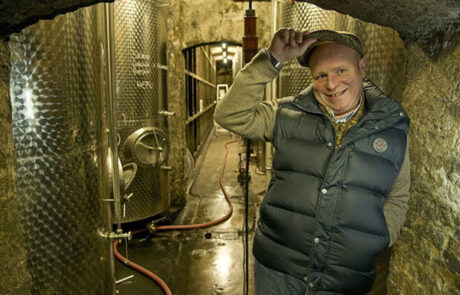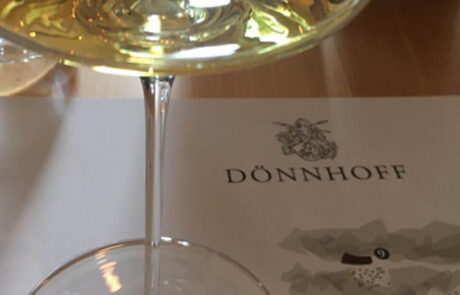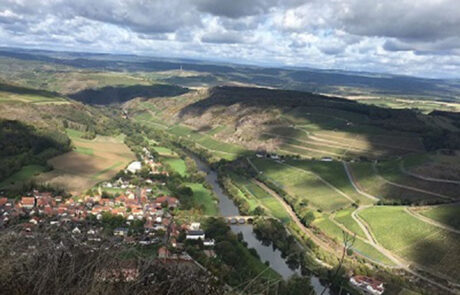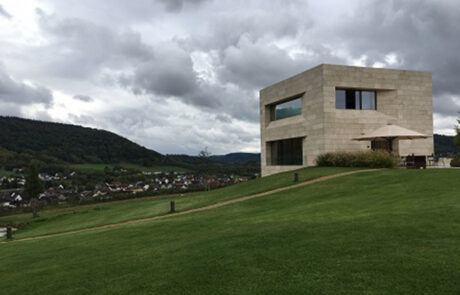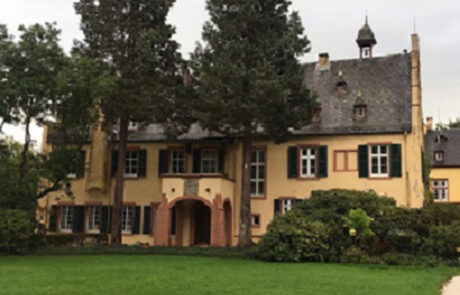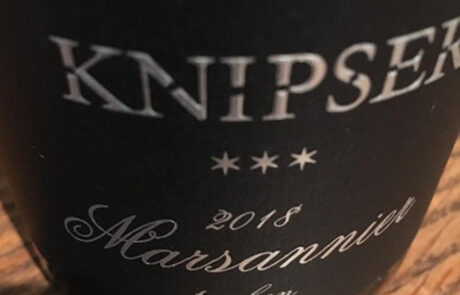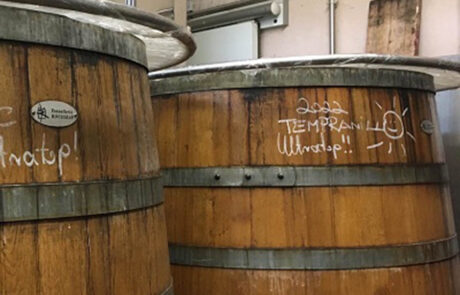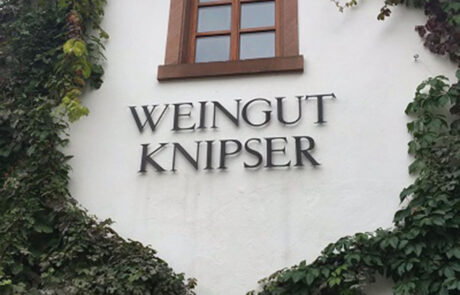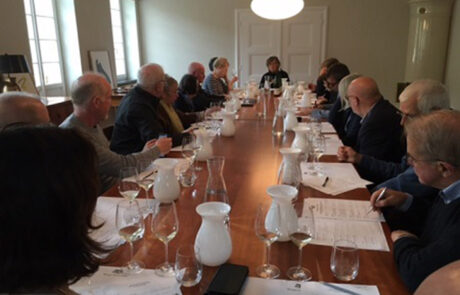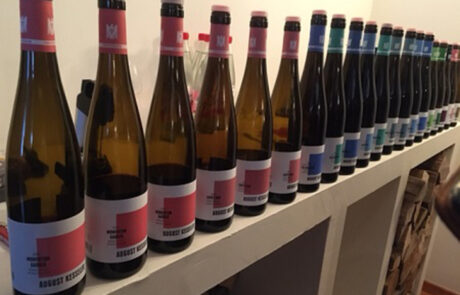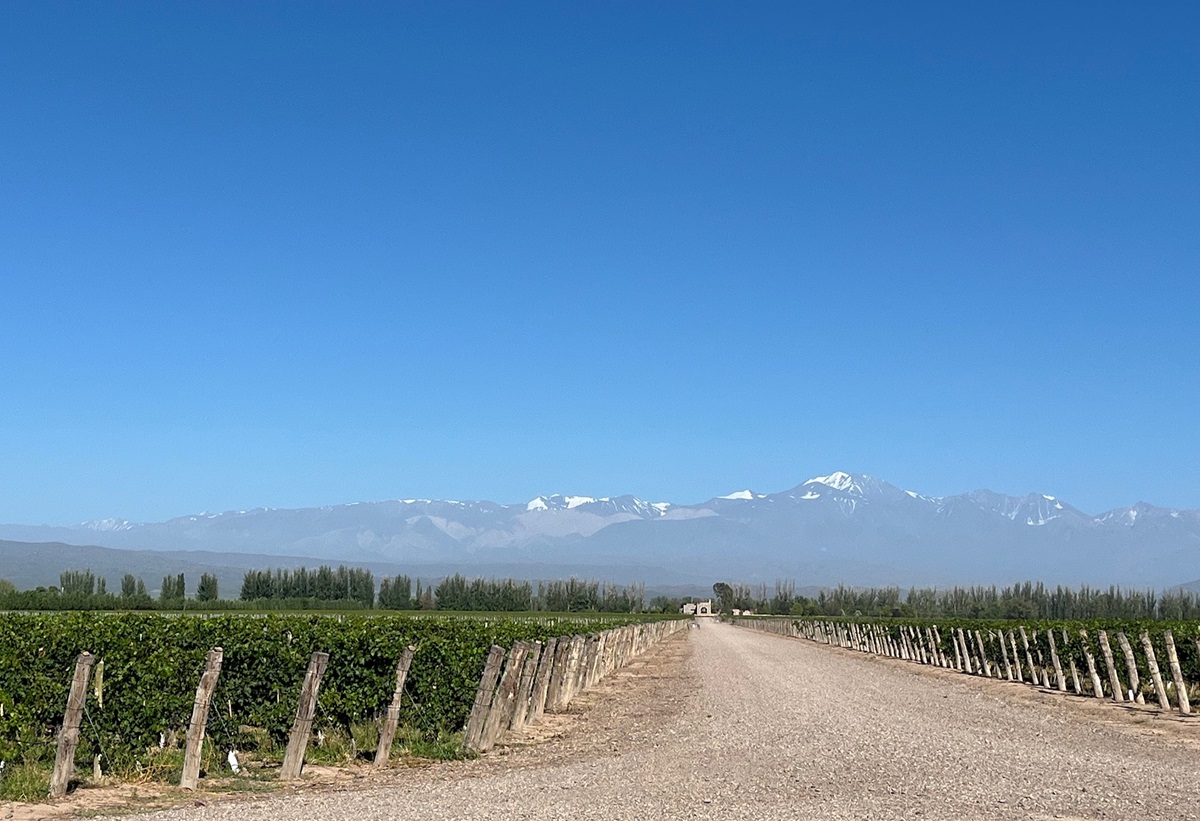GERMANY’S CHANGING CLIMATE
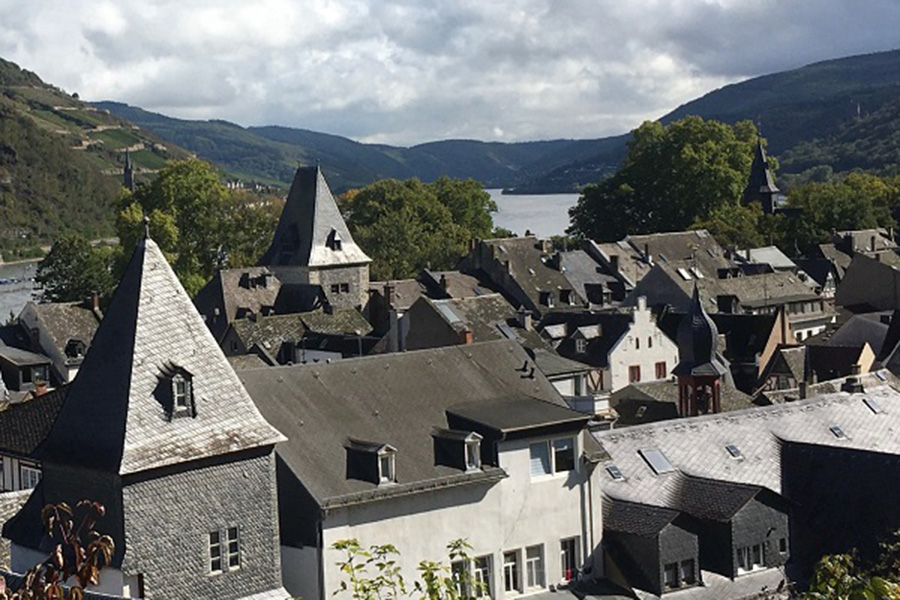
“I have never seen the Rhine so low in water, you could have walked across it this summer”, says veteran winemaker August Kesseler who makes Pinot Noir and Riesling in Germany’s Rheingau region.
When we visited Kesseler (pictured below) last month at his Assmannshausen cellars near Rudesheim, the 2022 harvest was underway. After an unprecedented three and a half months of no rain this year’s vintage was one of the earliest vintages on record starting in early September. During our visit pickers were hard at work on the steep slopes, but a deluge of rain was threatening to halt harvest.
Kesseler is worried. “My concern with climate change is its unpredictability – we now get frost, hail and fungus all at the wrong time. 2020 and 2021 were tiny vintages, now in this drought year we have a different problem. Grapes are plentiful and ready to pick, but physiological ripeness is not good enough so we will have to chapitalise”, he says.
Germany is considered cool climate and a challenging place to ripen grapes, but things are changing with marked variations between vintages. “2017 was frosty and wet, 2018 and 2019 were hot, 2020 exceedingly dry, 2021 wet cool and more classic – and now 2022 is warm and dry”, explained Hanno Zilliken of Weingut Forstmeister Geltz Zilliken.
On our tour we visited 15 wineries across six regions (above is our tasting at JJ Prum in Mosel). Almost all we visited were VDP members – the pioneering private estate organisation with a membership which reads like a ‘whos-who’ of German wine. All the winemakers had the same story to tell. In the heat, young vines with shallow roots suffer and older vines cope better in extreme drought conditions, particularly if they are ungrafted (eg on their own rootstocks).
Each region has its current challenges. Wine growers like Werner Knipser in Pfalz in one of Germany’s warmest regions is exploring grapes for the future from Marsanne to Tempranillo to supplement their succulent spicy Pinot Noirs. In Rheinhessen, growers lay straw between vines to retain moisture in the heat. Even in cooler Saar region, previously abandoned sites in cool side valleys are being revived in anticipation of future hot vintages.
The regions which impressed me most on this trip were those which have benefitted most from the warming temperatures: Ruwer and Saar south of Mosel near the Luxembourg border – and Nahe just south of the Rhine at Bingen.
In Ruwer and Saar we visited three contrasting producers – all making superb Rieslings in different styles. The beautiful aristocratic estate of Maximin Grunhaus in Ruwer (above) now expertly run by Maximilian von Schubert renowned for their Riesling Kabinetts made a fascinating contrast with modern cubist Van Volxem (below) owned by Saar history enthusiast Roman Niewodniczanski with its low yielding ‘vin de terroirs’. The third winery in Saarburg was small artisan family-owned Zilliken, run by Hanno and his daughter Dorothee, who make exquisitely delicate Rieslings amidst the cool forested slopes of the Saar.
Saar wines, famous in the past, were shunned in recent decades for their extreme high acid, but thanks to warming temperatures they are now tempered with beautiful ripe fruits. The delicate refreshing crisp 2021’s in Saar were some of the most refined we tasted on the trip.
Little-known Nahe (above) is a remote region rarely visited by tourists, which only rose to prominence since 1990s. It is cooler here in Nahe’s small wooded valleys than in the Mosel with Rieslings with an incisive acidity now balanced with gorgeous ripe fruits. We tasted at two wineries, Donnhoff and Emrich Schonleber – with the Donnhoff wines voted by our group of tasters as some of the most impressive white wines on the whole trip.
DRY RIESLING
Nahe: MINERAL RIESLING TROCKEN 2021 Emrich Schonleber (13%)
£18 Justerini & Brooks for 2020 vintage; Vinissimus
Herbal, minerally, salty with very fine acidity and long lingering finish from vines grown on blue slate, quartzite and pebbles – partial oak fermentation.
Nahe: HOLLENPFAD MUHLENBERG RIESLING TROCKEN GG 2021 Donnhoff (13%)
£60 for 2020 vintage The Wine Reserve
Floral notes, very incisive acidity, limey fruits, savoury edge with salinity on finish from this red sandstone quartz soil vineyard – Donnhoff’s newest project.
OFF DRY RIESLING
Saar: SAARBURGER RAUSCH KABINETT 2020 Zilliken (8.5%)
£20 The Wine Society; Justerinis
Thrilling mouthwateringly taut white with a feather light body, blossomy fruits and delicacy, underpinned with pure herbs and fine citrus flavours.
Ruwer: HERRENBERG RIESLING KABINETT 2020 Maximin Grunhaus (7.5%)
£20 The Wine Society; Howard Ripley
Slightly herbal nose, beautifully rounded citric fruits with zippy acidity and lovely minerally core from the historic Grunhaus estate.
Mosel: GRAACHER HIMMELREICH RIESLING SPATLESE 2018 JJ Prum (8.5%)
£29 Hic Winemerchants; Justerinis
Lovely slately freshness, vibrant acidity, slight sweetness, dried fruit notes with silky length from the masters of Mosel Riesling – delicious Spatlese which actually drinks like a Kabinett
Join Rose’s Escorted Wine Tours – next available tour to Jerez in Spring 2023 www.rosemurraybrown.com
wine tastings
The perfect gift for the wine enthusiast in the family. Rose does In-person tastings too.
cellar advice
Rose does cellar valuations for private clients, valuations for insurers & bespoke portfolio management.
Related stories
March 31, 2024
By Rose Murray Brown MW Published in The Scotsman 30 March 2024 On 2 February 1659, the first wine made from grapes grown in South Africa was crafted by the Governor of the Cape, Jan van Riebeeck. He had planted vines four years earlier in the Company’s Garden near Cape Town from cuttings imported from France. Van Riebeeck’s first
March 24, 2024
By Rose Murray Brown MW Published in The Scotsman 16 March 2024 Heatwaves and bushfires were very much on the agenda when I visited Chile last month as winemakers prepared for their 2024 harvest in blistering heat and drought, with a plume of smoke from the devastating fires lingering over coastal hills. Heat and drought are the greatest challenges
March 23, 2024
By Rose Murray Brown MW Published in The Scotsman 9 March 2024 I have two glasses of Malbec in my hands from the same high-altitude vineyard in Uco valley in Argentina. I am in the Catena Institute of Wine in Mendoza with winemaker Agustin Silva. He has asked me to taste the two wines, both from the 1500m high

